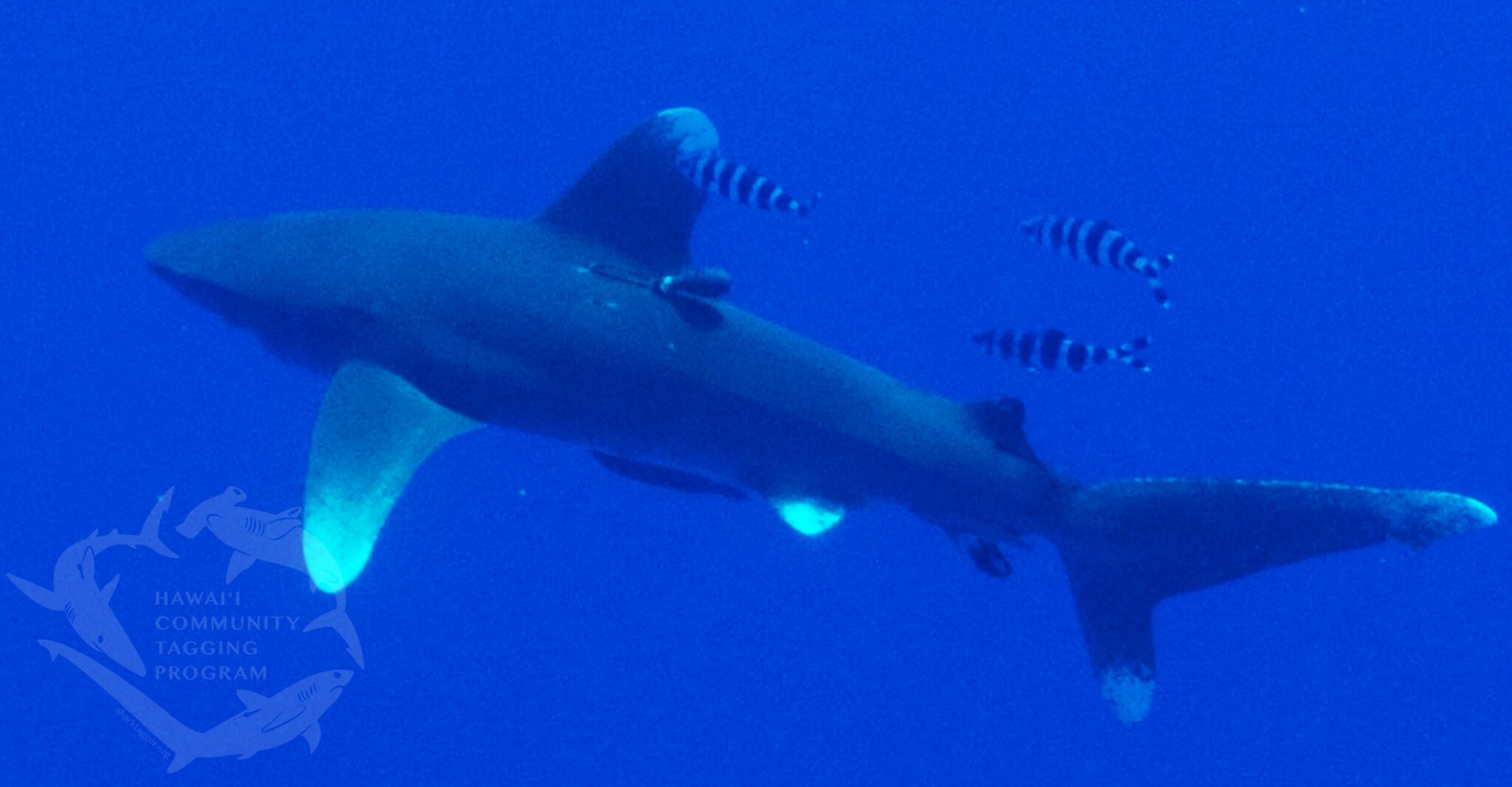Home > Research+Applications > Research Highlights > Fishing Impacts on Non-target Species
Fishing Impacts on Non-target Species Project
Bycatch mortality in longline fisheries is a major contributor to global declines in shark populations. The duration of time that an animal is hooked and the impacts of hooking on behavior affect the likelihood of mortality. Using a fortuitous recovery of an archival satellite tag, we describe the movement of an oceanic whitetip shark (Carcharhinus longimanus) and examine the behavior prior to its mortality in response to hooking on a longline. A 1.5 meter (m) fork length C.longimanus was tagged and released in good condition by a fisheries observer following initial capture on a U.S. longline fishing vessel. After release, the shark resumed normal vertical behavior within five hours. Over 198 days, the shark undertook wide-ranging movements throughout the Pacific between Samoa, Niue, and Tonga. The shark was hooked by a second longline vessel while conducting routine yo-yo diving between 0 and 120 m depth. For the first hour after being hooked the shark exhibited high swimming activity with rapid vertical movements between 20 and 40 m indicative of an initial struggle against the line. After this, the shark struggled at the surface for approximately five hours, until it succumbed to exhaustion and died on the line. Data obtained from this shark offers further understanding of capture behavior and time to mortality on a longline for C.longimanus which may assist managers as they work on options to reduce mortality rates for this threatened species.
Scott, M., Royer, M. & Hutchinson, M. Time of death: behavioral responses of an oceanic whitetip shark, Carcharhinus longimanus, to capture by a longline fishing vessel. Animal Biotelemetry 11, 34 (2023).


Dr. Molly Scott

Fishing Impacts on Non-target Species Project
Bycatch mortality in longline fisheries is a major contributor to global declines in shark populations. The duration of time that an animal is hooked and the impacts of hooking on behavior affect the likelihood of mortality. Using a fortuitous recovery of an archival satellite tag, we describe the movement of an oceanic whitetip shark (Carcharhinus longimanus) and examine the behavior prior to its mortality in response to hooking on a longline. A 1.5 meter (m) fork length C.longimanus was tagged and released in good condition by a fisheries observer following initial capture on a U.S. longline fishing vessel. After release, the shark resumed normal vertical behavior within five hours. Over 198 days, the shark undertook wide-ranging movements throughout the Pacific between Samoa, Niue, and Tonga. The shark was hooked by a second longline vessel while conducting routine yo-yo diving between 0 and 120 m depth. For the first hour after being hooked the shark exhibited high swimming activity with rapid vertical movements between 20 and 40 m indicative of an initial struggle against the line. After this, the shark struggled at the surface for approximately five hours, until it succumbed to exhaustion and died on the line. Data obtained from this shark offers further understanding of capture behavior and time to mortality on a longline for C.longimanus which may assist managers as they work on options to reduce mortality rates for this threatened species.
Scott, M., Royer, M. & Hutchinson, M. Time of death: behavioral responses of an oceanic whitetip shark, Carcharhinus longimanus, to capture by a longline fishing vessel. Animal Biotelemetry 11, 34 (2023).

